Looking for wild waterfalls, towering cliffs, and striking sequoia trees? Yosemite is the perfect place to visit! But before you do, I’d recommend getting prepared with this travel guide.
While the US has 63 majestic national parks to explore and California has 9 National Parks, Yosemite is one of the most magnificent.
Read on for a collection of insights and advice in my Yosemite visitor guide.

FREE CLASS: Get PAID to Travel!
Sign up for my free class and learn how I land paid brand deals that pay me to travel as a content creator and influencer!
Planning Your Yosemite Trip – Know Before Ya Go
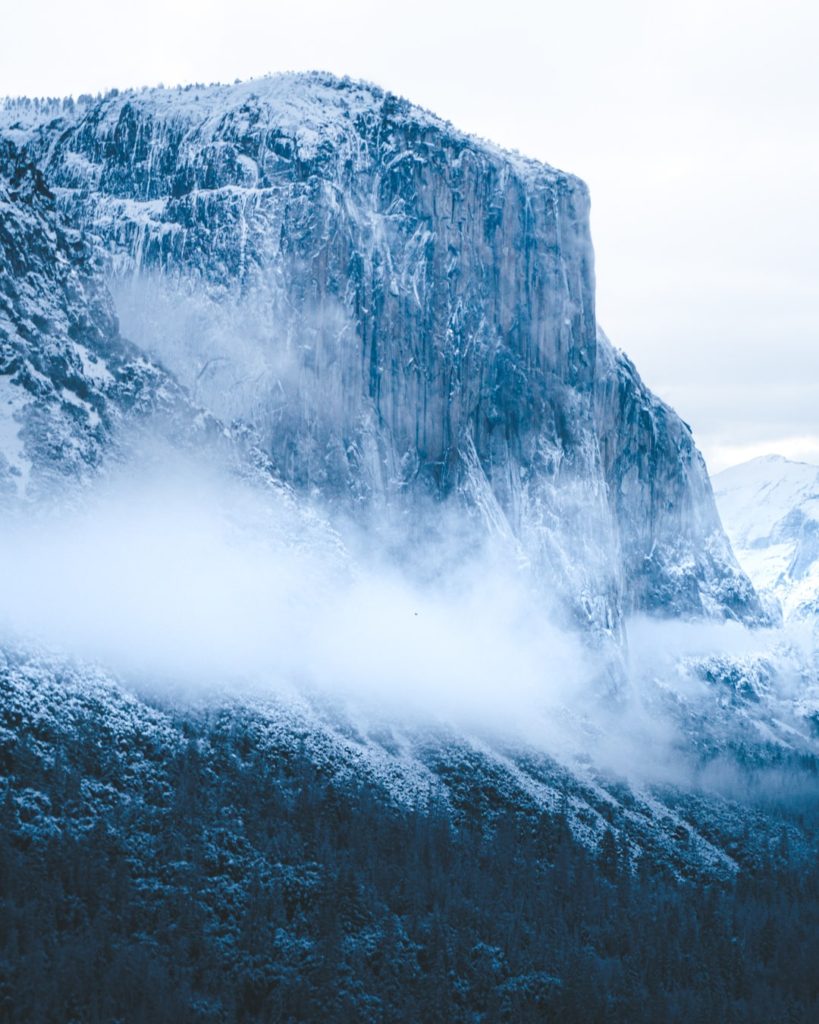
Yosemite is Mother Nature’s wonderland and there’s so much to learn about the park.
Let’s get the nitty-gritty details out of the way so that you can move into planning your trip.
Here are my top Yosemite travel tips for anyone planning a visit.
Best Time to Visit Yosemite National Park
In May and September, Yosemite offers stunning weather and accessible attractions, and it’s not overly crowded if you visit closer to September.
Summer is when most of the park opens up, though, but it’s also the busiest time. However, this is when you’ll have access to some of Yosemite’s best views.
Take a look at each season broken down in detail below.
Summer
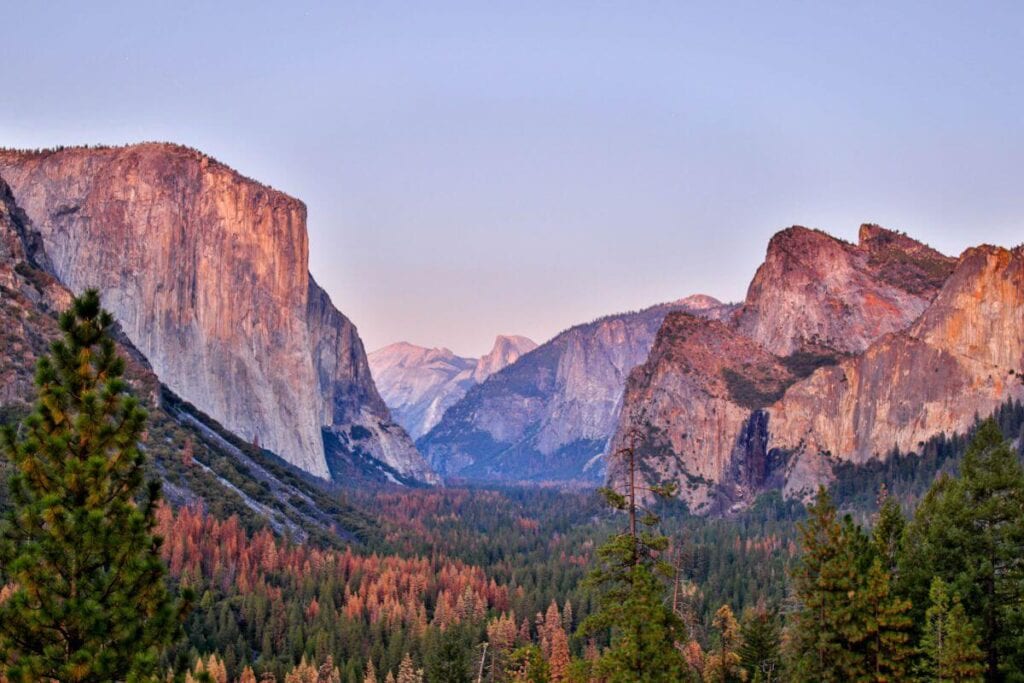
This is the ideal season to visit full-flowing waterfalls, enjoy every hiking trail in the park, and camp under a starlit sky.
The weather is hot, and the park is splendid, with stunning waterfalls and gorgeous sunsets. It is the busiest time because of this wonder, so bear that in mind.
Fall

If you want to hike and camp but the idea of crowds keeps you away, fall is the answer.
The weather in Yosemite in the fall is still pleasant, but the crowds die out as the blazing sun cools.
The only downside is that the waterfalls are far from their glorious state during this season. Plus, the gorgeous fall foliage is amazing to see.
Winter

Most of the park’s trails and roads close when it snows, limiting the spaces you can hike and visit.
However, you can participate in some pretty fantastic skiing and snowboarding.
Winter is also a quieter time in the park, with fewer visitors. I wouldn’t advise camping during winter unless you’re a pro.
Spring
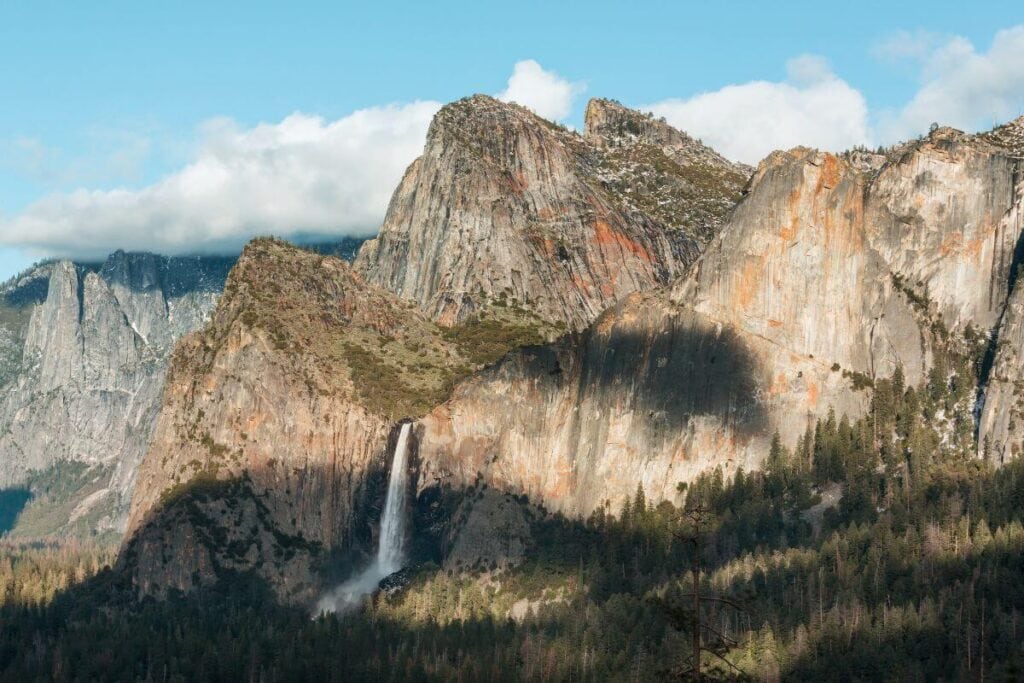
Yosemite in spring is as lovely as it gets but can become a bit wet.
The spring storms bring rain and turn little lakes into big dams. This is good news for the waterfalls, though, but it can be treacherous in places.
There is often some snow up until March, which is great if you missed the skiing, but at the same time, it could be better if you want to hike closed trails.
You’d Also Like: Glacier National Park Guide
How Many Days in Yosemite National Park Do You Need?
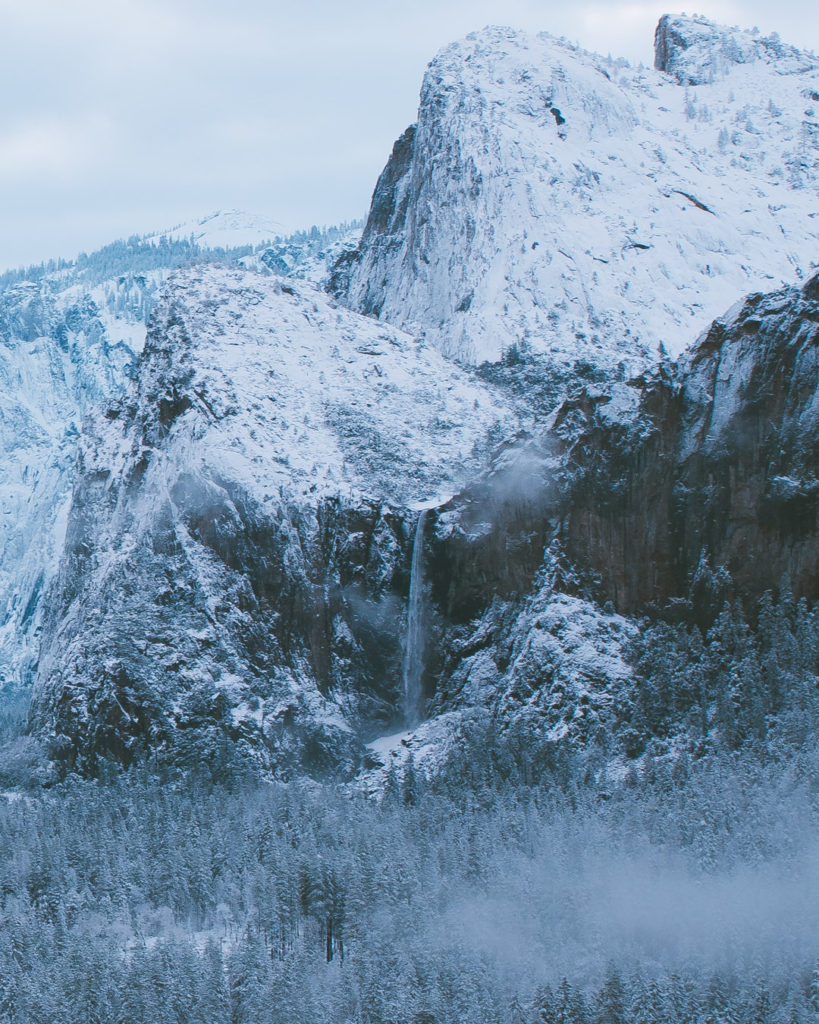
Ideally, 2 – 4 days is just enough time to soak in the best parts of the park.
This will allow just enough time to see the big ticket items like Glacier Point and Yosemite Falls, not forgetting Half Dome.
Plus, you’ll be able to fit in quite a few stunning hikes.
You’d Also Like: Redwood National Park Visitor Guide
Yosemite National Park Fees

To enter Yosemite National Park, you must pay $20 per person and $35 per vehicle.
If you buy an annual pass for $70, you get free access throughout the year — excellent if you live nearby or plan a few trips.
There is a list of days you can enter the park for free, which you can find on the website, along with all other entrance fee information.
HOT TIP: Purchase the America The Beautiful Pass, and you get free entry into all national parks.
Getting to Yosemite National Park

Yosemite is a popular USA destination, just 170 miles from San Francisco and around 270 miles from Los Angeles.
This means that Yosemite isn’t a hard park to reach. Here are your options:
Flying
You have a selection of airports you can fly into before you travel to Yosemite.
Fresno/Yosemite International Airport (FAT):
- Southern entrance via Highway CA-41: 1.25 hours
- Heart of Yosemite Valley: 2.5 hours
- Tuolumne Meadows: 3.5 hours
- Public transportation available via YARTS
San Francisco International Airport (SFO):
- Big Oak Flat entrance via Highway CA 120: 2.5 hours
- Heart of Yosemite Valley: 3.5 hours
- Tuolumne Meadows: 4-5 hours
- Public transportation options available
Los Angeles International Airport (LAX):
- Yosemite Valley via I-5 to Highway CA 99 to Highway CA 41: 6 hours
- Add 1.5 hours for Tuolumne Meadow
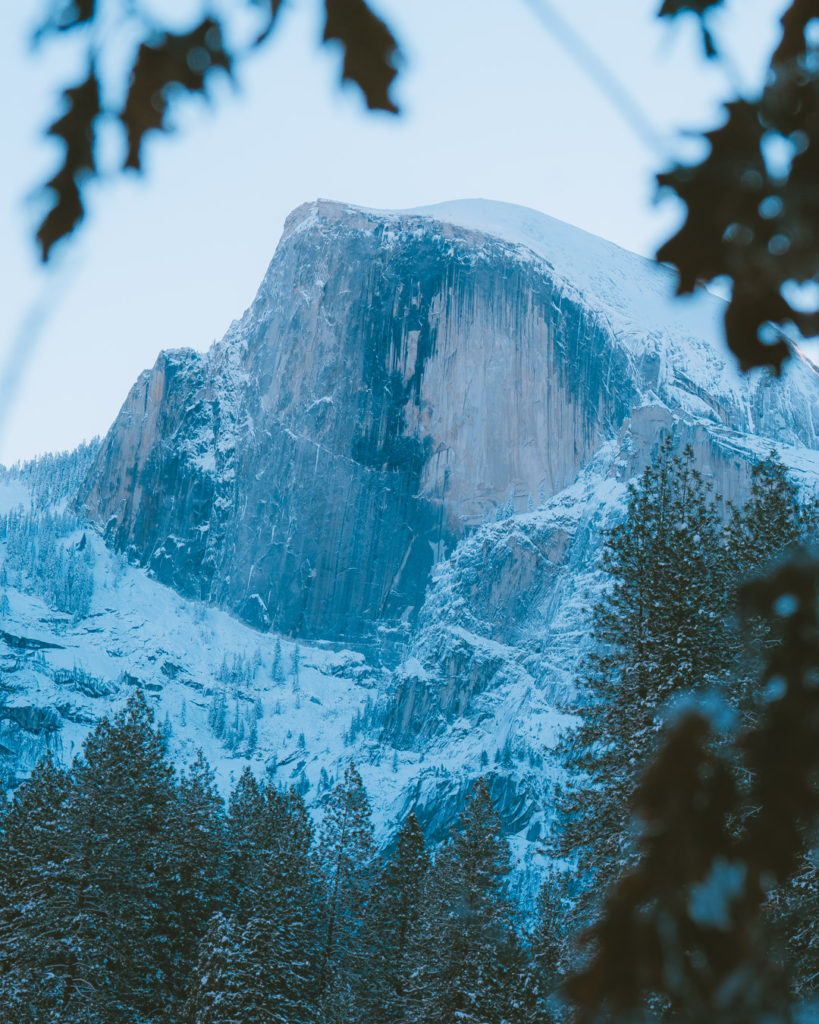
Driving
Yosemite is a vast area, so there’s no easy way to find it on a GPS. According to the official website, these are the best ways to get to the park.
If you drive, remember that free parking is limited, so arrive early. And while you’re at it, I HIGHLY recommend planning for a Yosemite to Redwood National Park road trip!
From San Francisco:
- Take the Oakland-Bay Bridge (Highway 80 East)
- Then Highway 580 east, following signs for Tracy/Stockton to Highway 205
- Follow Highway 205 to Highway 120
- Stay on Highway 120 into Yosemite National Park
From Los Angeles:
- Follow Interstate 5 North toward Bakersfield.
- Just beyond the Grapevine towards Bakersfield, follow Highway 99 North to Fresno.
- From Fresno, follow Highway 41 to Yosemite Valley
You’d Also Like: Utah National Parks Ranked Best to Worst
Dogs in Yosemite National Park

For the pooch parents, Yosemite welcomes your dogs if you keep them leashed.
There are dog-friendly hiking trails and camping grounds throughout the park.
Remember that several areas are not dog-friendly, so look out for signs and steer your pup away from those spaces.
Where to Stay in Yosemite National Park

This massive park has no shortage of places to stay, and you don’t have to rough it out camping if that’s not your style.
Here are just some of the best hotels inside the park:
- Yosemite Valley Lodge – This hotel offers free parking and a convenient location to all of Yosemite’s most loved sights.
- The Ahwahnee – Here, you can enjoy views of Half Dome or a beautiful waterfall from your room. Have a meal in the restaurant and laze in the shared lounge.
And these VRBO lodges:
- Inside Yosemite National Park – This house stands out with its scenic views of trees and a meadow. Inside, a spacious living room with a wood-burning stove opens up to a full kitchen and dining area, all bathed in natural light through large windows.
- Lupin Cabin – One of the Yosemite Hilltop Cabins, this is a comfy cabin with a full kitchen, bath, and master bedroom. There’s also a reading loft in the cabin and stunning hiking trails surrounding it.
Find more Yosemite accommodations
Camping in Yosemite National Park

Yosemite has 13 campgrounds, but many are first-come-first-served, and getting a spot can be a battle.
Other campgrounds work on a reservation system, but you must often book months in advance.
I would advise checking Camp 4 first, but only if you’re not bringing pets. This campground is open year-round and is only $10 per person per night.
Or check out Wawona Campground, also available year-round, at $36 pp/pn (reservations needed from April to October).
For a complete list, see here.
Getting Around Yosemite National Park
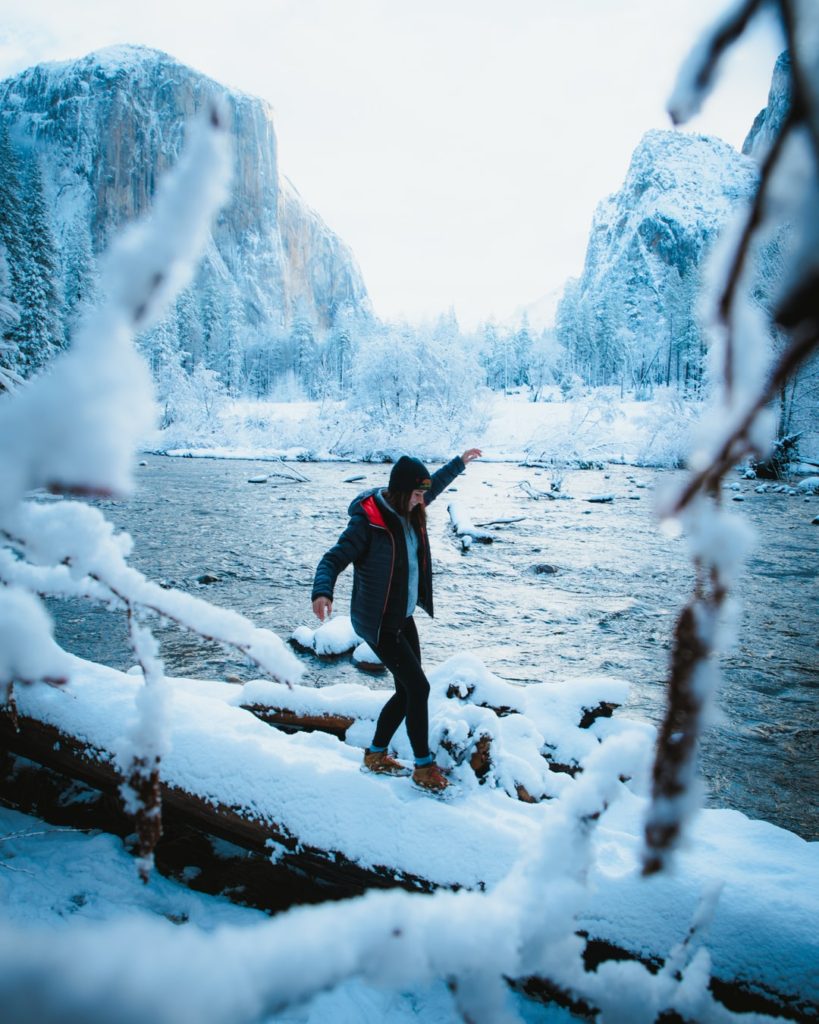
You can hike and bike or book a horse ride around the park, but that will only get you so far.
The park does have well-maintained roads, but these will be closed if there is snow, and like I said – Yosemite is a big park. The best way to visit Yosemite is to take the park’s shuttle.
The Yosemite Valley Shuttle is a complimentary shuttle service within Yosemite Valley designed to alleviate traffic congestion and reduce environmental impact.
It follows a designated route with multiple stops at points of interest, such as trailheads, viewpoints, and visitor centers within Yosemite Valley.
This shuttle system provides a convenient and efficient way for visitors to navigate the valley without the hassle of finding parking, especially during busy seasons.
Shuttles run at regular intervals, ensuring accessibility for visitors throughout the day.
Yosemite Travel Guide: Best Hiking Trails

- Yosemite Falls Trail: This challenging trail leads to the tallest waterfall in North America.
- Mist Trail: Known for its proximity to Vernal and Nevada Falls, this trail provides a refreshing mist from the waterfalls.
- Panorama Trail: Starting at Glacier Point and descending into Yosemite Valley, this trail provides incredible vistas of Half Dome and the High Sierra.
- Four-Mile Trail: A steep ascent from the valley floor to Glacier Point, rewarding hikers with some of the best views in Yosemite.
- Glen Aulin Trail: Leading to the Glen Aulin High Sierra Camp, this trail passes through meadows alongside the Tuolumne River.
- Cathedral Lakes Trail: This moderate trail leads to pristine alpine lakes with the iconic Cathedral Peak as a backdrop.
- Grizzly Giant Loop: Explore the giant sequoias in this relatively easy loop trail, including the famous Grizzly Giant and California Tunnel Tree.
- Wapama Falls Trail: A trail along the Hetch Hetchy Reservoir leading to the impressive Wapama Falls. The hike offers scenic views of the reservoir and surrounding cliffs.
- Sentinel Dome Trail: A short hike leading to the top of Sentinel Dome, providing panoramic views of the park.
- Gaylor Lakes Trail: Starting near Tioga Pass, this trail leads to stunning alpine lakes with views of the surrounding peaks.
- Polly Dome Lakes Trail: A lesser-known trail offering solitude and beautiful landscapes, including views of Polly Dome and the surrounding lakes.
Wrapping Up My Yosemite National Park Travel Guide
If you weren’t sure how to visit Yosemite or what to do once you got there, now you know!
Imagine gazing up at the iconic El Capitan, feeling the mist on your face as you hike the Mist Trail, and standing in silent awe among the ancient giants of Mariposa Grove.
Yosemite is a sanctuary for the soul, offering an escape into the wild, where every step reveals a new element of natural beauty.